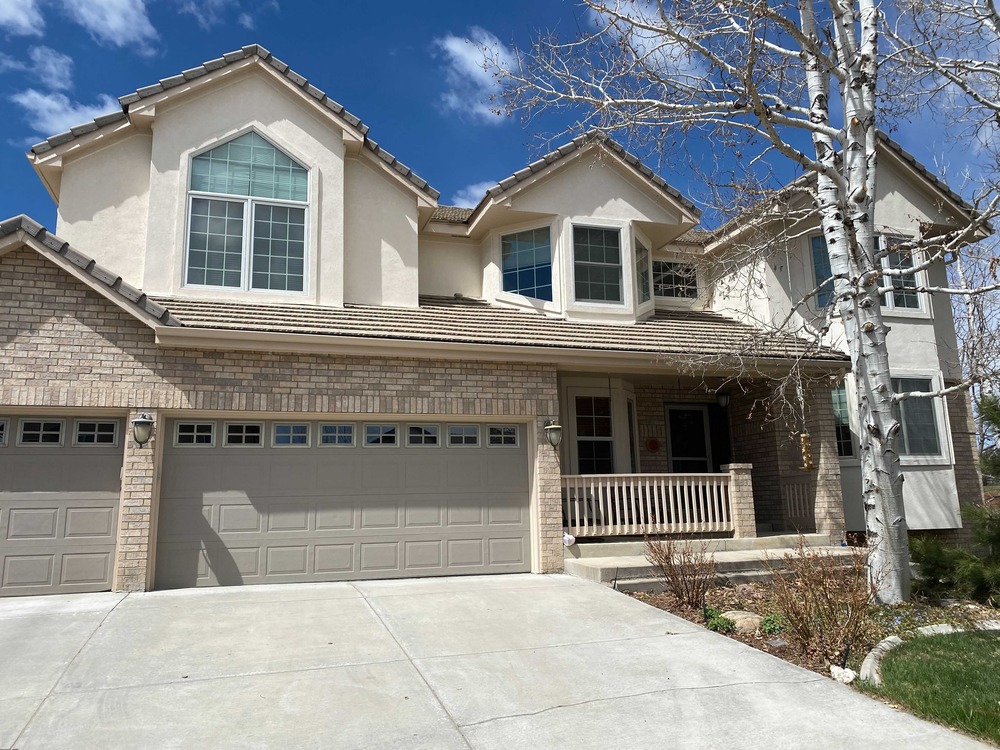The color you choose for your home’s exterior does more than freshen things up. It sets the tone for your property, creates a first impression for visitors, and even adds to your home’s value. With so many shades and finishes available, picking the right one can feel like a big decision. In this guide, we will talk about why this process can be both exciting and overwhelming, highlight the top color trends for 2026, and share practical ways to make sure your final choice looks stunning. By the end, you will also see how professionals, like the team at Paint Boise, can make the process easier and more rewarding.
Why is Choosing the Right Exterior Paint Both Exciting & Overwhelming?
Painting the outside of your home feels like giving it a whole new personality. You get the chance to add charm, stand out in the neighborhood, or blend in beautifully with your surroundings. That’s the exciting part. On the other hand, it can be overwhelming because paint is a big commitment. It is not something you change every season, and if you end up with a color you don’t love, living with it can be frustrating. The trick is finding the balance between what feels right for you and what makes sense for your home.
Popular Exterior Paint Color Trends in 2026
Color trends in 2026 are all about comfort and connection to nature. Instead of loud or flashy shades, many homeowners are opting for softer tones that evoke a sense of calm while still maintaining a current look. These colors have a grounded, lived-in quality that works well on different styles of homes. Below are some of the shades gaining attention this year.
Earthy Greens
Green is finding its way back into exteriors, especially softer, nature-inspired shades. Colors like sage, olive, and moss create a calm, grounded feel, helping connect your home with its surroundings. These tones work especially well with wood, stone, or darker trims. The result is a home that feels warm, inviting, and tied to the landscape around it.
Warm Neutrals
Neutrals never really go out of style, but warmer tones are especially popular right now. Warm neutrals include beige, taupe, or sandy shades. They exude comfort and elegance without drawing too much attention to themselves. Homes with stucco or brick exteriors look particularly good in these colors since they highlight the material’s natural character. Warm neutrals also make it easy to experiment with trim or door colors.
Soft Blues
Soft blues are becoming a favorite for homeowners who want something fresh but not overwhelming. Light blue and muted slate shades add a coastal, airy feel that looks clean and relaxed. These colors stand out in sunny climates where the light brings out their brightness. When paired with white trim, they create a classic look that feels both cheerful and sophisticated.
Whites
White remains a top choice because of its crisp, timeless look. A white home feels bright, polished, and instantly welcoming. The key is choosing the right undertone; warmer whites lean cozy, while cooler whites feel sleek and modern. White also works as a perfect backdrop, letting you add personality through doors, shutters, or landscaping.
Charcoal Gray
Charcoal gray has grown in popularity with homeowners who want a bold, dramatic look. It has enough depth to feel striking without being too harsh. When it is balanced with lighter trim or natural wood, it gives your home a modern edge while highlighting architectural details. Charcoal gray is especially effective on contemporary-style homes but also adds sophistication to traditional ones.
Soft Orange
Soft orange is gaining attention as a playful yet tasteful choice. Think muted terracotta or desert-inspired tones rather than bright pumpkin shades. These colors add warmth and personality without feeling loud. They pair well with natural features like stone or brick and look particularly inviting when combined with neutral trims.
Choosing the Best Color for Your Home’s Exteriors: Practical Strategies
Choosing the right exterior color goes beyond picking a shade you like. You will want to think about your home’s design, location, and permanent features so the final look feels cohesive and long-lasting.
Start with Your Home’s Architectural Style
The design of your home should be the first thing you look at when picking paint colors. A craftsman usually feels right in muted greens, browns, or other earth tones that echo its natural materials. A modern build often looks sharper with crisp whites or dark grays that match its clean lines. Victorian homes, with their detailed trim and ornamentation, give you room to play with several colors to highlight all that character. Let the style of your home guide you in the right direction, rather than forcing a color that clashes with it.
Understand Your Surroundings
The setting around your home matters just as much as the architecture. A house tucked into trees tends to blend beautifully with greens, browns, or other nature-inspired shades. If you live on a wide, open lot, softer neutrals can soften the expanse and make the house feel more inviting. In a busier neighborhood or city block, stronger shades like charcoal or bright white can help your home stand out without looking loud. When your color is coordinated with the backdrop, your home feels like it belongs right where it is.
Factors in Lighting and Direction
Light changes how colors look, and exterior paint is especially sensitive to it. A shade that looks muted on a sample card may appear brighter under direct sunlight. South-facing homes can make colors look lighter, while north-facing homes often benefit from warmer tones to avoid looking dull. Testing colors in different spots around your home will show how they shift throughout the day.
Coordinate With Fixed Features
Your roof, brick, or stonework likely won’t be changing anytime soon, so your paint color should work with them. For example, a dark roof looks great paired with lighter body colors, while a red brick base may call for neutral siding to balance the boldness. Coordinating paint colors with these fixed elements creates a seamless and intentional look.
Choose a Color Scheme
Instead of relying on a single shade, think about how a few colors can work together. The main color covers most of the house, the color of the trim draws attention to edges and details, and an accent shade brings life to smaller spots like shutters or the front door. When you stick to just a handful of colors, the house feels coordinated and interesting without looking overdone.
Use the Color Wheel and Undertones
Not all colors play nicely together, even when they look fine on their own. Undertones make a big difference, for example, a gray with a blue undertone won’t sit well next to a warm brown roof. A quick glance at the color wheel can help you see which shades naturally complement one another. Keeping undertones in mind helps your home look pulled together rather than slightly “off.”
Consider the Emotional Impact of Color
Colors have a way of setting a mood. A blue home feels calm and coastal, while soft oranges or warm neutrals feel inviting. White reads as fresh and classic, while charcoal creates a bold statement. Think about the atmosphere you want your home to give off and choose accordingly.
Test Before You Commit
Never forget to test paint samples before you commit to a color. Paint looks different in natural light than it does in a store. Brush a few samples on different parts of your home and check them at different times of the day. This simple step can save you from making a choice you will regret.
Common Exterior Color Mistakes to Avoid
Here are some exterior color mistakes you should definitely avoid.
- Ignoring your surroundings: Choosing a color without thinking about your neighborhood or natural landscape can make your home feel out of place. The best choices enhance the environment instead of clashing with it.
- Going too trendy: Trendy colors may look stylish now, but can feel outdated quickly. It’s better to use trends for accents and keep the main colors classic so your home stays appealing over time.
- Overusing bold accent colors: Bright accents can be beautiful in small doses, but using them everywhere can overwhelm the design. Save bold shades for doors or shutters where they can shine without dominating the whole exterior.
- Forgetting about trim harmony: Trim is what ties everything together. If the trim color does not complement the main wall color, the whole exterior painting can feel unfinished. Choosing the right trim shade is just as important as picking the main paint color.
Benefits of Working With a Color Consultant or Painting Professional
While you can pick a color on your own, working with a professional saves you from second-guessing. A consultant or experienced painter has an eye for how shades interact with the architecture, lighting, and materials of your home. They can also steer you away from colors that fade too quickly or clash with fixed features. Working with a color consultant is a good way to save time, avoid costly mistakes, and feel confident in the result.
Final Thoughts
The color you pick for your home’s exterior does more than change its appearance; it shapes the way people feel when they see it. Trends can be helpful for inspiration, but finding the right shade is really about what works for your house, your setting, and your style. Our team at Boise Painting is ready to help with advice and expert painting services that keep your home looking its best for years to come. Get a free quote today!











